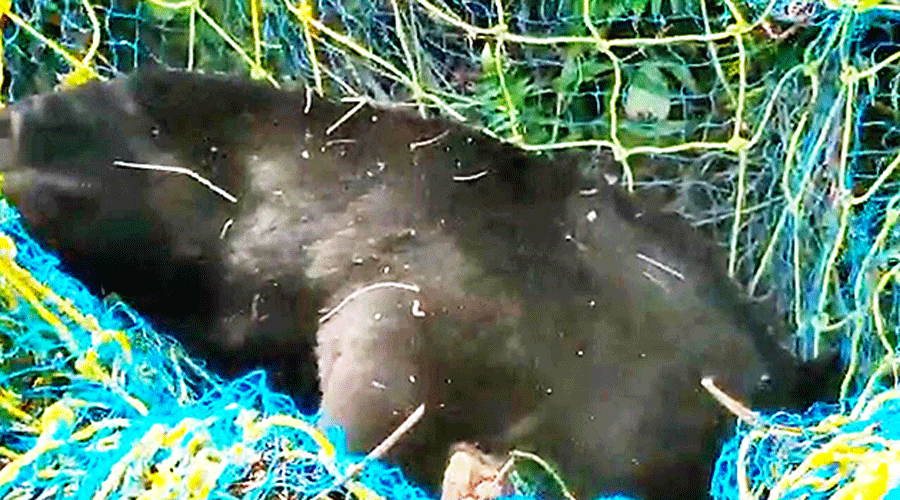
A first: Himalayan bear census in state
Don't Miss
- Madhyamik Result 2025: 66 Students Shine in Top 10 as West Bengal Celebrates Academic Excellence
- East Medinipur Leads, Kalimpong follows as Mamata Banerjee Congratulates Students on Madhyamik 2025 Results Reflecting Statewide Academic Excellence
- WBSSC recruitment case: Calcutta HC concludes hearing on contempt of court petition, reserves verdict
Forest department will count black bears for the first time in north Bengal
 |
| A Himalayan black bear that was rescued from the fringes of Buxa Tiger Reserve in Alipurduar district recently.: The Telegraph |
TT Correspondent | Alipurduar | 29.11.22 : The state forest department will count Himalayan black bears for the first time in north Bengal.
A number of bears was sighted and rescued in the region, both in the hills and the foothills, since last year. In the past 15 days, six bears were rescued from different locations of the Dooars.
The animal, which usually stays in areas of higher elevations, is suspected of descending to lower regions because of cold and in search of food. On a number of occasions, they are straying into tea estates and human habitats.
“This is the first time that bear census will be done in the forests of north Bengal. Since last winter, bears have been coming down to the plains and we need to know the approximate number of bears in this region. The exercise will commence in the first week of December. These days, we are providing training to our staff for the task,” said Rajendra Jakhar, chief conservator of forests (wildlife, north).
The exercise, sources said, will be carried out in a number of forests, including the Buxa Tiger Reserve, Gorumara National Park, Jaldapara National Park, Chapramari Wildlife Sanctuary, Senchal Wildlife Sanctuary and Neora Valley National Park.
The count, foresters said, is necessary for the conservation of the species as the Himalayan black bear has been marked as vulnerable in the red data book of the International Union for Conservation of Nature (IUCN) which marks the status of animal species, vis-à-vis their population.
Senior officials, when asked about the estimation process, said they would divide each of the forest areas into grids and in each grid, there would be a trap station.
The size of the grid will depend on the density of the bear population in a region. In the high density areas, the grid will be of 1sqkm. In the low density areas, it will be of 4sqkm.
“The trap stations would be set up in each grid and once a bear walks into the trap, its hair will be collected. After the collection process, all hair samples will be sent for DNA tests. After the tests, we would be able to get an estimated population of bears in north Bengal,” explained an official.

.png)

0 Response to "A first: Himalayan bear census in state"
Post a Comment
Disclaimer Note:
The views expressed in the articles published here are solely those of the author and do not necessarily reflect the official policy, position, or perspective of Kalimpong News or KalimNews. Kalimpong News and KalimNews disclaim all liability for the published or posted articles, news, and information and assume no responsibility for the accuracy or validity of the content.
Kalimpong News is a non-profit online news platform managed by KalimNews and operated under the Kalimpong Press Club.
Comment Policy:
We encourage respectful and constructive discussions. Please ensure decency while commenting and register with your email ID to participate.
Note: only a member of this blog may post a comment.